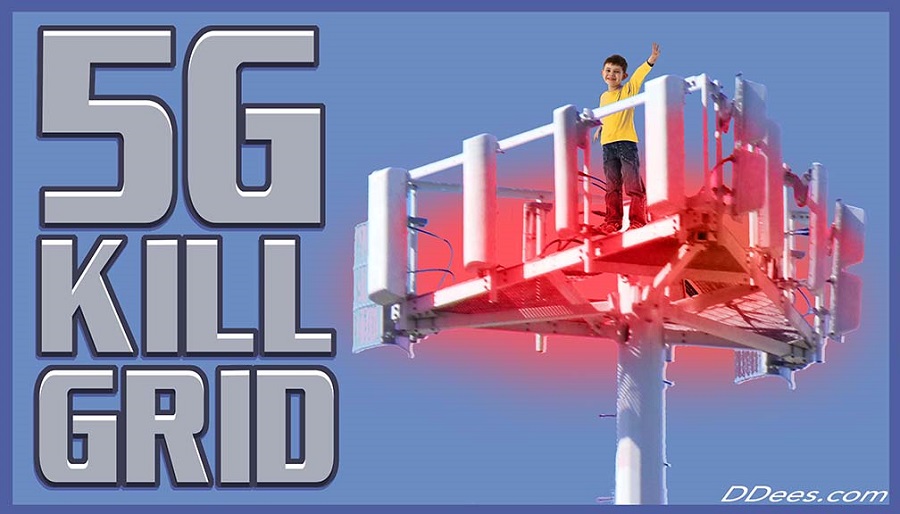Wellness Effects of 5G Radiation

The health risks of 5G radiation are still being debated, however one study suggests a link between RF radiation and the development of cancers in male rats. This study was classified before it was declassified at the end of 2012 by Central Intelligence Agency, but it shows that radiofrequency can trigger cancerous growth in animal, and even humans. In the research, scientists exposed male rats to radiofrequency for 15 days , and discovered that they developed the same kinds of cancers that human beings do.
Health effects of radiation from 5G

The rapid expansion of wireless communications have led to development of 5G technology however, there is a growing concern regarding the health effects of the radiation from 5G. Although the higher frequencies do not penetrate the body as deeply as older technologies, scientists have pointed to possible systemic impacts and are calling for more studies. To ensure that people are protected, it is the European Commission is requesting independent studies to determine whether the technology is posing any health hazards.
It is important to note that there's a substantial number of misinformation about the health effects of 5G and it is vital to clear any misconceptions that persist. Although 5G isn't yet widely used however, there are plenty of people who are being told it can cause health problems typically through social networks where sensational use of language is commonplace.
Beamforming technique
Beamforming is among the most vital technologies in the 5G wireless networks. It is a method that uses multiple radiating elements to generate a narrow beam. how dangerous is 5g for beamforming is minimize how much unwanted radiation is reflected within the signal that results. This method is typically employed for wireless communications systems, and is essential for 5G's low-cost coverage.
This method works by electronically weighing the signals of each antenna. This results in the narrow beam of radiation that enhances coverage of cell phones indoors as well as at cell edges. This technique is important since poor coverage could cause poor user satisfaction. Apart from improving the signalquality, beamforming can reduce the amount of interference a user encounters from other devices.
Power density
The power density of 5G radiation emanating from towers on cell phones will be similar to previous generations of 4G and 3G systems. The reason for the lower power density is the sensitiveness of electronic components. The maximum radiation output of a 2G handset was about 2 Watts, whereas that of the 4G model was around 200 milliwatts.
The power density is how much electromagnetic energy can be absorbed by the body from a specific distance. Its power density in 5g radiation is typically expressed in Watts per square metre. Contrary to the SAR measurement power density is a measurement of the quantity of electromagnetic energy that can be found in an area. The parameters for power density may differ for mobile devices and wearables according to their operating frequencies and distance.
Specific absorption
The Specific Absorption Rate (SAR) is an measure that measures the rate at which a specific frequency deposits power into human tissues. In general, the SAR number must not exceed 2 watts per kilogram body mass. This value is derived by the electrical field present in tissues as well as the density of mass, measured in kilograms per cubic meters. how dangerous is 5g was recently applied to the proposed antenna design.
The latest radio technologies that make up the network 5G operate at frequencies that are below 6 GHz. These frequencies are referred to as millimeter waves. However the FCC's SAR compliance protocol only applies to frequencies up 6-GHz. Additionally the SAR test requires that measurements be performed in phantoms containing tissues simulating media.
Skin health and its effects
At present, we know very little about the health effects of 5G radiation on the skin. The existing knowledge is limited by the lack of in-vivo experiments and theoretic models. However, there is an urgent need for more research on the effects of 5G radiofrequency radiation on the human skin. The use of 5G radio frequencies could cause damage to the skin, especially to the epidermis, which is very sensitive.
Unlike 4G, 5G radiation has a high frequency that has been shown to increase the temperature of human body tissues. Human bodies are dipolar, and the higher frequency of 5G radio waves will cause heat in the skin. The exposure to radio frequencies from 5G may also affect other organs of the body, such as the brain.
